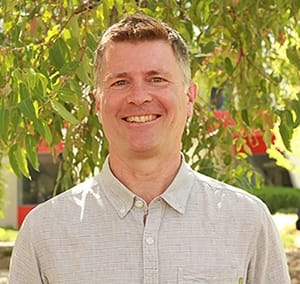Last week, Bob Furbank (Director, ARC Centre of Excellence for Translational Photosynthesis) and I were lucky enough to be at the National Press Club to hear an address from the President of the National Farmers Federation, Ms. Fiona Simson. Her speech focused on how national economic recovery can be achieved, in part, through reform and investment in agriculture. Fiona drew on her lived experience as a farmer on the Liverpool Plains in NSW, where she runs a mixed farming enterprise including broad acre farming and breeding cattle; her speech also drew upon her experience as a national leader in the agricultural sector. The speech highlighted the importance of farming for the broader economy, nicely articulated through the statement: “when farmers do well, Australia does well”. The associated report (Get Australia Growing) outlined seven areas where government could play a role in improving the productivity, profitability and environmental sustainability of farming.
For me, it was the last section that was most interesting – a section that highlighted the need to grow the innovation ecosystem in ways that prepare agriculture for a future world where the climate has changed and where technology has undergone a revolution. Research as a driver of change was acknowledged, with “R&D that delivers both incremental and transformational change” being crucial. While acknowledging the Rural Research and Development Corporations (RDCs), the report highlights the need for Australia’s research investment landscape to be modernised through initiatives such as increasing cross-sectional collaboration, developing a digital strategy for agriculture, and backing innovative solutions to climate change. These areas are all highly relevant to CEAT and the ANU and CSIRO communities we serve.
For Australian agriculture to remain competitive and contribute to global food security, it needs to invest significantly in the development and application of digitally and genetically disruptive technologies. Only by doing this will we be able to improve productivity in the face of climate change, population growth, increased food demand, and diminishing land for agricultural use. Importantly, these challenges are complex and multi-dimensional – as a result, we cannot rely on past approaches to develop the solutions needed. Rather, there will be an increasing need for vibrant innovation ecosystems – such as the ANU-CSIRO Precinct in Canberra – to evolve across Australia. The ANU-CSIRO Precinct is home to world-leading research capability in plant, environmental and computer sciences, robotics, economics, social sciences and policy contributed by ANU, and CSIRO’s translation capacity and strong partnerships with industry partners. These are just the sort of capabilities needed if we are to achieve the transformational change identified by Fiona Simson in her Press Club speech.
An example of how the ANU is using its interdisciplinary capability to address agricultural challenges is the recent awarding of an AgriFutures contract to ANU to develop a report on the growing potential for how space-based technologies can be used to improve Australia’s farming, fishery and forestry industries. CEAT is proud to be working with the ANU InSpace Institute, Research School of Earth Sciences and Research School of Electrical, Energy and Materials Engineering to develop this report. Please keep an eye out on the CEAT website for information on how you can be involved in the industry engagement workshops that will take place in August – they promise to be exciting opportunities for industry stakeholders to help shape the content of the report, and for technologists to understand where space-based technologies can (and cannot) address real-world challenges facing the agricultural sector.
Talking of space, the CEAT Innovation Hub has been proud to host several staff from FluroSat – an award-winning agri-tech start-up company that uses the power of scientific modelling, artificial intelligence and satellite-based remote sensing to deliver early, accurate and actionable information on crop health and nutrition to farmers. FluroSat are growing rapidly, with their CEO, Anastasia Volkova recently making MIT’s list of Innovators Under 35. As of this month, the Canberra team of FluroSat will be leaving the Innovation Hub – we wish them well and look forward to maintaining links with Anastasia and her team. While it has been great to have them as part of the CEAT community, we also accept (and expect) that as start-ups and SMEs within the Hub develop, many will eventually leave the Hub. This is as it should be – CEAT is an innovation hub where companies can take advantage of the ideal location at the intersection of ANU and CSIRO to grow.
Last month, I announced that CEAT had been elevated to the status of an ANU Innovation Institute (along with other Institutes, such as InSpace, 3Ai and WearOptimo). Following that decision, approval was given last week for CEAT to become an independent academic unit, based in the College of Science. This new status will provide CEAT with increased options for the type of positions we appoint, and a springboard for future growth. We thank the Research School of Biology (in particular Professor Allen Rodrigo, past RSB Director, now at the University of Auckland) for providing a home for CEAT to establish and grow since August 2018 – without RSB’s support, CEAT would not exist.
As is always the case, please keep an eye on the CEAT website and subscribe to our newsletter for updates on a range of new initiatives and programs.
Thank you.
Owen Atkin, Director, CEAT.
